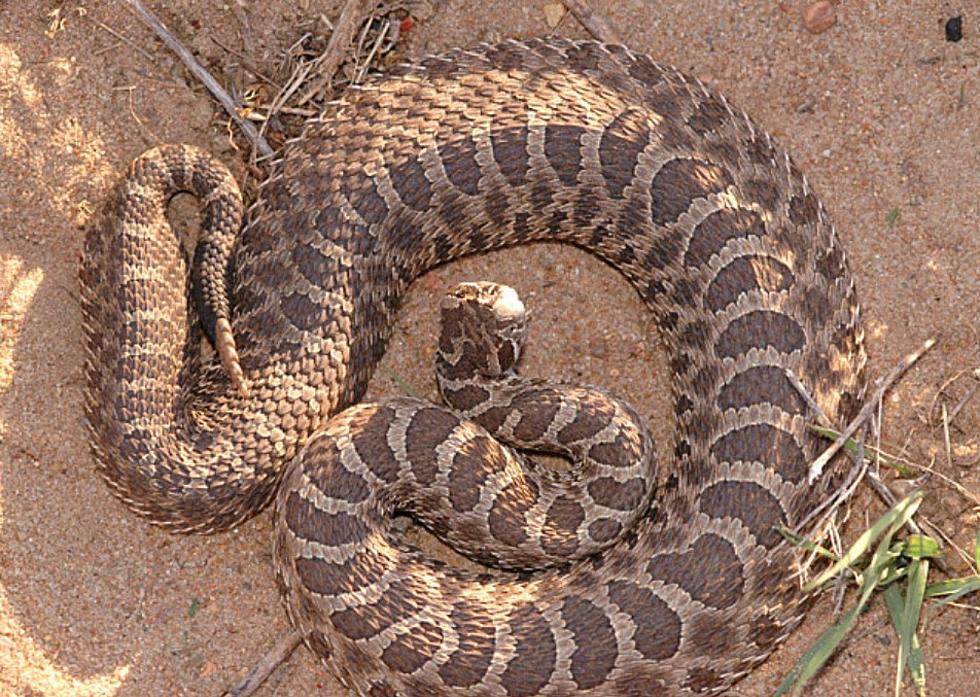
Unique White Rattlesnake Found in Texas State Park
Ranger Paul found this unique snake coiled in the shade by one of the structures at Wyler Aerial Tramway in El Paso. The snake was two feet long, and as you can see, its pale gray and black coloring makes it blend.
About Rock Rattlesnakes
Crotalus lepidus eats lizards, rodents and small birds, so Ranger Paul says they're helpful because they control those animal populations. They are small as far as rattlers go, rarely getting longer than 32 inches long.
This venomous pit viper species is heavy though, with a big head and eyes like you would expect, with vertical pupils. Rock Rattlesnakes vary some in color, but their pigmentation is always similar to that of their environment. When they live around areas rich in limestone they're light grey. If they're found at higher altitudes with darker rocks and vegetation, they tend to have darker scales.
You don't want to be stung by one since their venom is a hemotoxin, a type of toxin that destroys red blood cells, damages organs and breaks down tissue. A Rock Rattler bite is extremely painful, and may also have neurotoxic effects. They're unique, impressive-looking creatures, but it's best to stay away.
Other Texas Venomous Snakes
Texas has four types of venomous snakes -- Coral snakes, copperheads, water moccasins and rattlesnakes. Rattlesnakes, copperheads and water moccasins all have triangular heads that look like an arrowhead and pupils like slits.
Coral snakes, the most venomous snakes in North America have a round head and round pupils. If you're not sure whether a snake is venomous, always use extreme caution.
How to Avoid Snake Bite
Long summer days provide East Texans with plenty of opportunities to explore the piney woods. This time of year reptiles are active, and they tend to escape from the heat or wait for their prey in unexpected locations. Here are a few tips for staying safe when you enjoy nature.
- Watch where you're going. Avoid switching to autopilot when you're walking, hiking or trail running. Never pick up branches or debris without first making sure there isn't something under it. At night, use a flashlight.
- If you see a snake in your yard, try to identify it before you kill it. Non-venomous snakes are a good thing. They attack and eat venomous snakes and keep other small animals away from your home.
- Never handle an unidentified snake.
- If you kill a venomous snake, most people know to cut off and bury the head. Do so with a long-handled implement instead of grasping the reptile with your hand.
Stay alert and use common sense to stay safe. You may even glimpse a rare or unusual animal like the rock rattlesnake!
More From 101.5 KNUE









